Auctions
Sotheby’s Sold a Jean Prouvé Table for $1.6 Million Last Month—But Didn’t Mention It Might Contain Asbestos
An eagle-eyed antique dealer realized there was more to the "Granipoli concrete" table than met the eye.
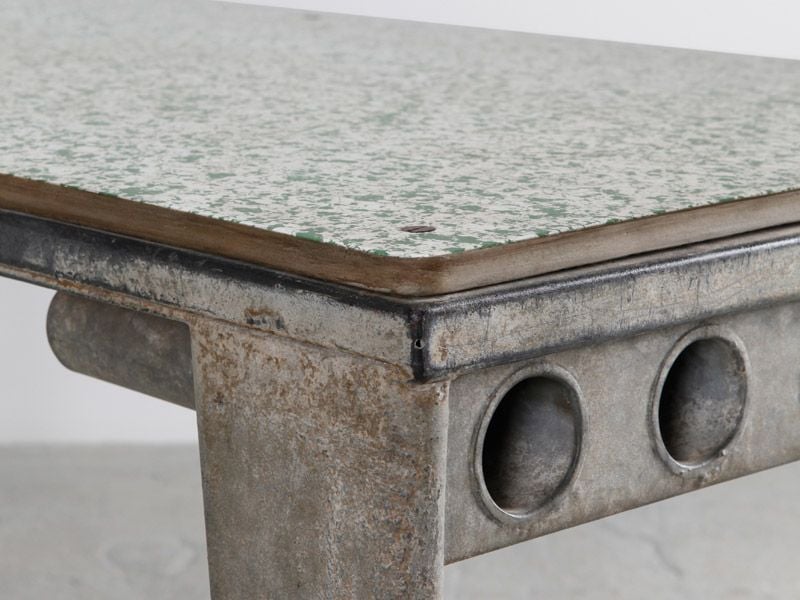
An eagle-eyed antique dealer realized there was more to the "Granipoli concrete" table than met the eye.

Sarah Cascone

Would you pay $1 million for a table? What if it was made with a material that could give you cancer?
Believe it or not, in recent months, Sotheby’s New York has sold not one but two Jean Prouvé tables made from fibrated Granipoli concrete—a French trade term for a mixture of cement and asbestos, a fibrous mineral known to cause mesothelioma, asbestosis, and lung cancer.
The first, from the collection of art collector Peter Brant and supermodel Stephanie Seymour, sold for $988,000 in December on an estimate of $500,000 to $700,000. The second sold last month, at the house’s “Important Design” auction, for $1.6 million over a $350,000 to $550,000 estimate—enough to become the seventh highest auction result of all time for the French designer. (The object’s seller, Ken Mazik of the Pinnacle Art Collection, is a whole other can of worms.)
The refectory tables, as the works are known, are part of a set of 30 tables Prouvé made in 1939 for the canteen at La Pierre Attelée, a seaside summer camp in Saint-Brevin l’Océan, France.
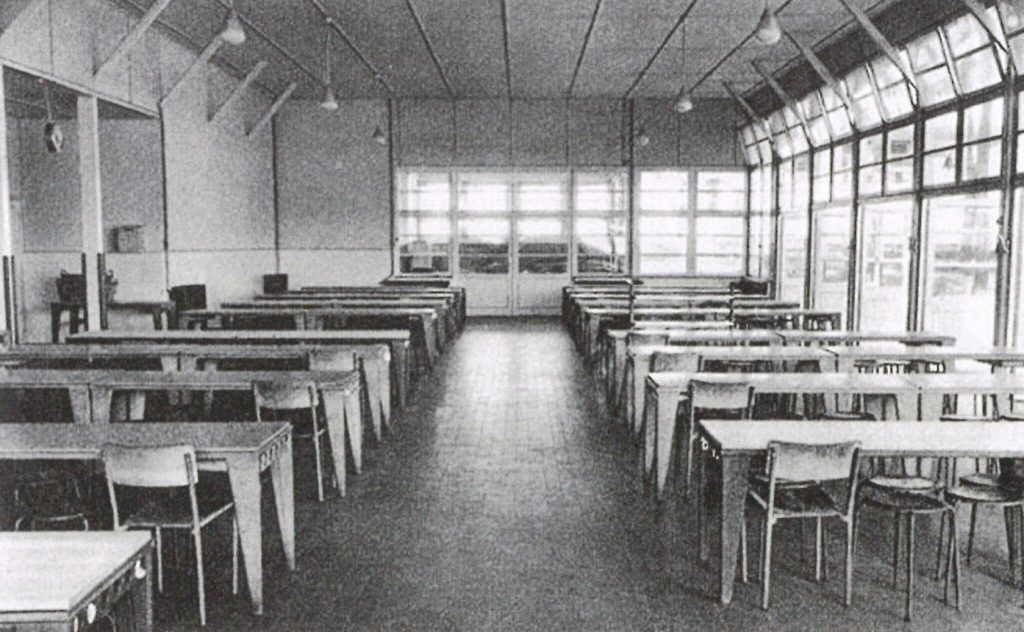
Jean Prouvé refectory tables as seen at La Pierre Attelée summer camp, Saint-Brévin l’Océan, France. Photo courtesy of Sotheby’s New York.
To protect the table from the salty air of the Atlantic, Prouvé gave it galvanized steel legs. But what the designer didn’t consider was how to protect the owner from the dangers of asbestos, which were unknown at the time of its production.
For generations, asbestos was considered an excellent building material thanks to its strength, fire-resistance, and ability to act as an electrical insulator. But once the material starts deteriorating, inhaling its microscopic carcinogenic fibers can be deadly, and its use in construction has been outlawed in many countries—but not in the U.S.
It was Jonathan O’Hea, an art and antiques dealer in New Jersey, who first noticed that Sotheby’s was selling a table containing potentially hazardous materials. Thanks to his familiarity with older materials—he has a bachelors degree in historic preservation—it was the word “fibrated” that set off alarm bells.
“It’s such a weird word. I had never heard of it, but quickly deduced that it had to do with fibers being introduced to concrete,” O’Hea told Artnet News. “Seeing that the table dates to the 1930s, my immediate thought was, ‘That has to be an asbestos product.’ At the time, asbestos was seen as this miracle mineral, and [was considered] safe.”
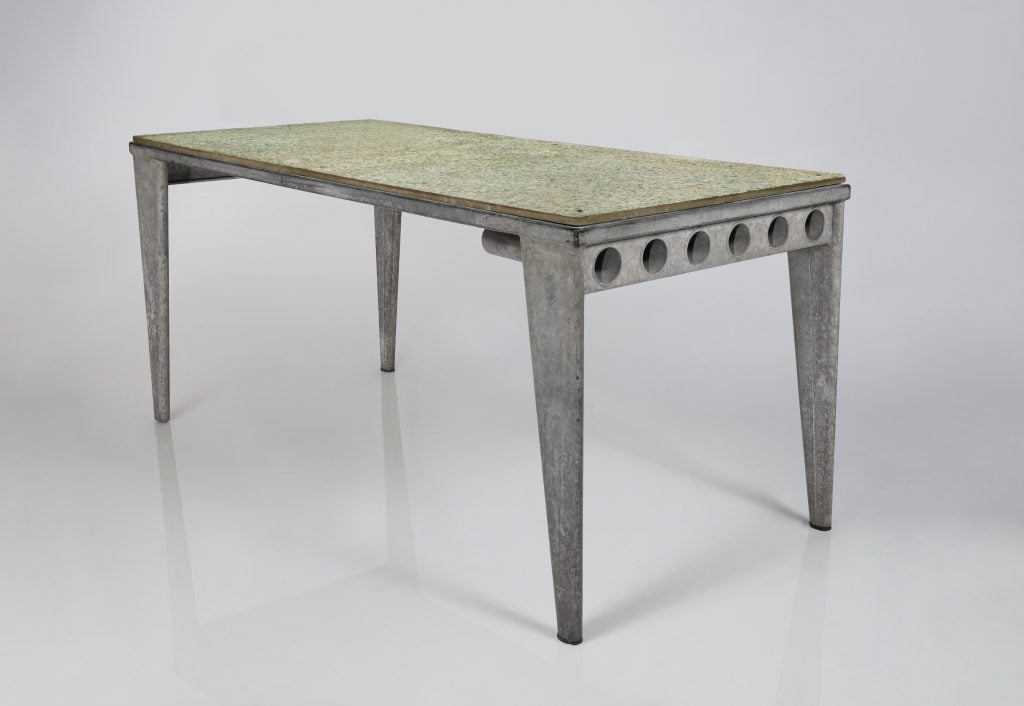
This Jean Prouvé refectory table with a “fibrated Granipoli concrete” top from the collection of Ken Mazik sold for $1.623 million at Sotheby’s New York in June 2022. Granipoli is a trade term for an asbestos product. Photo courtesy of Sotheby’s New York.
A quick Google search turned up a 1956 United Nations treaty series with an item relating to the sale in Greece of “boards composed of a mixture of asbestos and cement. These boards, granitized, enamelled or lacquered for partitions and facings and known in France under the trade names of ‘Granitoloflex,’ ‘Granipoli’ and ‘Evergranit.’”
In layman’s terms, Prouvé had used a material somewhat akin to sheetrock for his tabletop.
“It was meant for architectural usage, technically. On a wall, it would not be constantly abraded with silverware, cups, and dishes,” O’Hea said. “I suspect it’s called Granipoli because it’s supposed to look like a faux granite.”
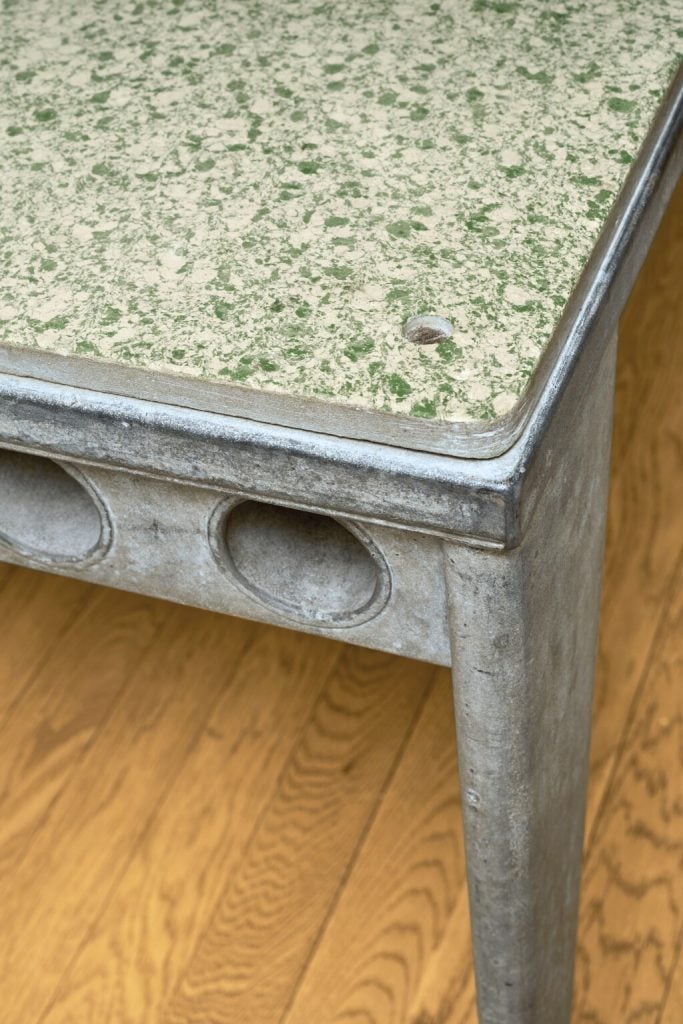
This Jean Prouvé refectory table has a “fibrated Granipoli concrete” top. It turns out Granipoli is a trade term for an asbestos product. Photo courtesy of Sotheby’s New York.
But the Sotheby’s listing gave no indication that the buyer would be ponying up hundreds of thousands of dollars for an object impregnated with a highly dangerous substance.
“It’s just wrong,” O’Hea said. “There’s a moral obligation to notify the buyers, whether they care or not—asbestos is a known carcinogen.”
Ahead of the sale, O’Hea alerted Sotheby’s about the presence of asbestos in the object, through a message on Twitter and in an email to seven members of its 20th-century design department, but did not receive a response.
“Sotheby’s is currently working with its scientific research team to identify the material in question,” a representative for the auction house told Artnet News in an email. “The object remains in Sotheby’s possession and will be isolated pending the results of analyses.”
Calling something a cute name (Granipoli) doesn’t not make it an asbestos product. #sothebys #designweek #jeanprouve #jeanprouvé #asbestos #dangerous #mesothelioma #midcenturymodern #mcm #interiors #asbestosawareness #midcentury #granipoli #interiordesign pic.twitter.com/fPUpcT4BOf
— Jonathan O’Hea (@HeaJonathan) June 4, 2022
It is unclear exactly how much asbestos the Prouvé table contains, but the asbestos in solid concrete table is unlikely to become friable, which is when it becomes airborne and the risk of exposure sets in.
“If you break the table, cut the table, sand the table, disturb the table in any way, it can generate airborne dust that may have asbestos particles that may contaminate the air that you may ingest or breath in,” Karen Selby, a registered nurse and patient advocate at the Mesothelioma Center, an advocacy center that helps patients find treatment for asbestos-related diseases, told Artnet News.
“But if none of that happens, there’s no risk to any individual around a product that contains asbestos,” she added.
The condition report for both tables sold at Sotheby’s described “light surface scratches, small losses concentrated to the edges and corners as well as minor abrasions throughout.”
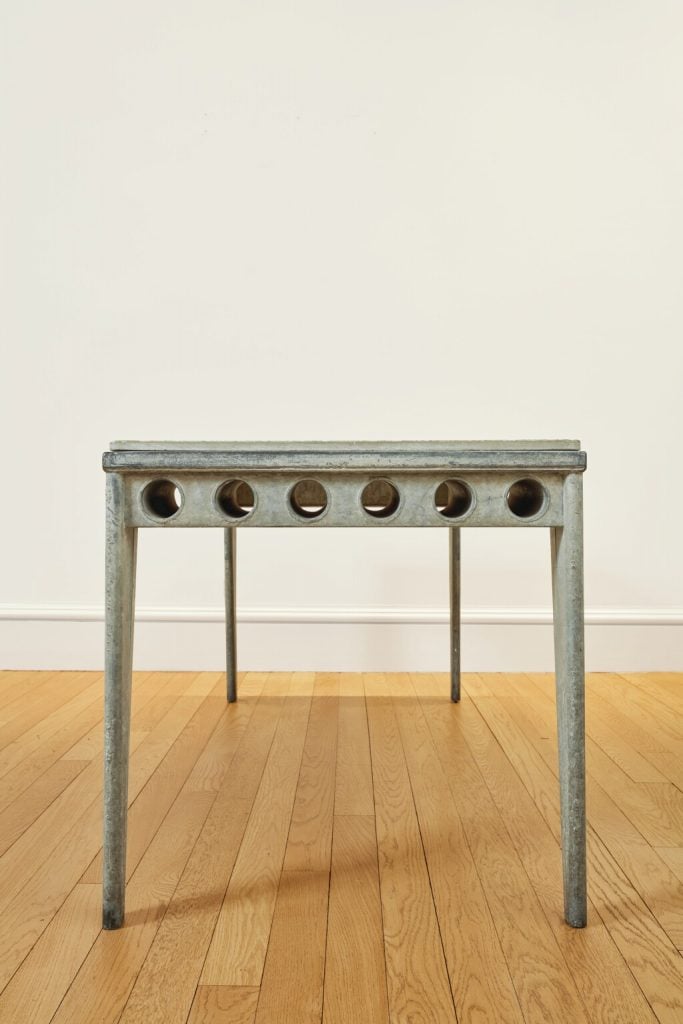
This Jean Prouvé refectory table has a “fibrated Granipoli concrete” top from the collection of Peter Brant and Stephanie Seymour sold for $988,000 at Sotheby’s New York in December 2021. Granipoli is a trade term for an asbestos product. Photo courtesy of Sotheby’s New York.
More troublingly, the example sold last month also features fine hairline cracks, as well as a larger one that had to be “restored by a professional conservator to stabilize and minimize the appearance of a crack.”
The buyer chose to spend $1.6 million even knowing the tabletop had been damaged—but would they have made the same decision had they been aware that those cracks in the surface could potentially release tiny carcinogenic particles into the air?
Many buildings still contain asbestos to this day, but removing it creates the risk of fibers becoming airborne. New York law requires licenses and certification to work with or remove materials that contain asbestos.
There’s also the matter of where the buyer lives, as it is illegal to import or export products containing asbestos to some countries, including France (since 1996) and the U.K. (since 1999). Both tables sold at Sotheby’s appear to have been exported from France prior to the ban, according to their provenance records.
Prouvé also isn’t the only designer who used asbestos in his work before it was identified as a health hazard.

Three examples of Willy Guhl’s Loop Chair sold for €13,650 ($16,611) at Cornette de Saint Cyr in Brussels in May 2021. The chair is made from Eternit, a concrete asbestos composite. Photo courtesy of Cornette de Saint Cyr, Brussels.
In the 1950s, the Swiss company Schweizerische Eternitwerke commissioned the Swiss designer Willy Guhl to create works using Eternit, a patented mixture of cement and asbestos known for its durability. It became a staple of his practice, used in his designs for furniture and planters.
Guhl was best-known for his sculptural Loop Chair. The piece took advantages of the load-bearing properties of fibrated concrete, bending a thin sheet while it was still damp to create a hollow, swooping design that rocked back and forth. Prized for its elegant simplicity, low cost to produce, and weather resistance, Loop Chair won the Swiss “Die Gute Form” design award in 1955.
But Eternit halted production on the chair in 1980, over concerns that it was 10 percent asbestos. (A new, asbestos-free model was introduced in 1997, but with additional support ribs.) In 2009, prosecutors in Italy filed a lawsuit against the company, alleging that 2,000 workers had died from illnesses contracted due to asbestos exposure.
A suite of three of the chairs sold for €13,650 ($16,611) at Cornette de Saint Cyr in Brussels in May 2021. It was Guhl’s second highest auction result, behind the 2007 sale of a concrete bench, also presumably containing asbestos, for £9,375 ($18,939) to Sotheby’s London, according to the Artnet Price Database.
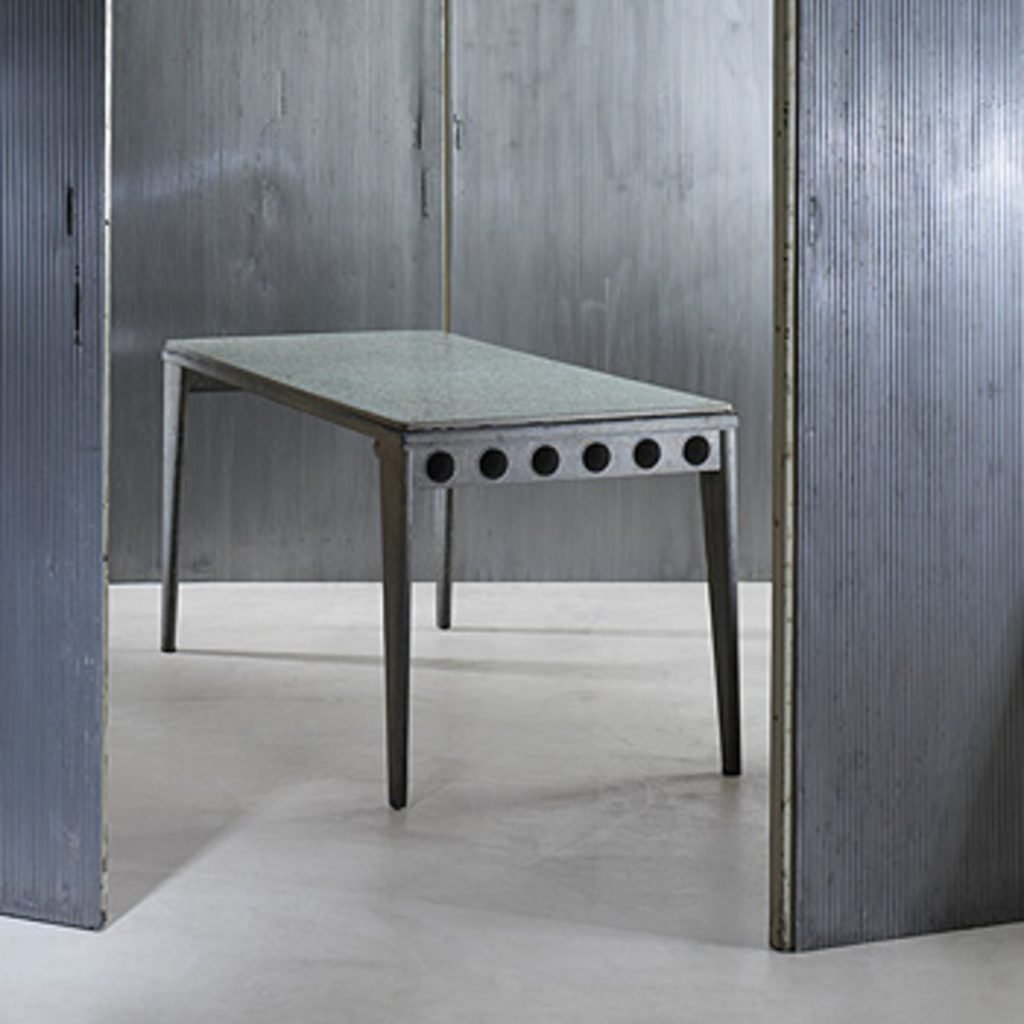
This Jean Prouvé refectory table with a “fibrated Granipoli concrete” top sold for $252,000 at Wright in Chicago in September 2005. Granipoli is a trade term for an asbestos product. Photo courtesy of Wright.
Prouvé’s refectory table, which was not mass produced, has only appeared at auction a handful of times. There are only 17 surviving examples of this “important… outstanding and exceedingly rare” table, the Sotheby’s catalogue note wrote ahead of last month’s sale, describing the furniture piece as “exceptional and highly desirable.”
Before last year, only one other copy had ever sold, for $252,000 at Wright in 2005, according to the Artnet Price Database. (A slightly different Granipoli Prouvé table by the designer twice failed to sell at Phillips de Pury in New York in 2010 and London in 2011.)
Despite these auction appearances, Prouvé scholars don’t seem to have picked up on the fact that one of his most prized designs incorporated a hazardous material.
“How is it that I was the first person to Google Granipoli and figure out that this was asbestos?” O’Hea asked. “Ignorance is not a defense.”